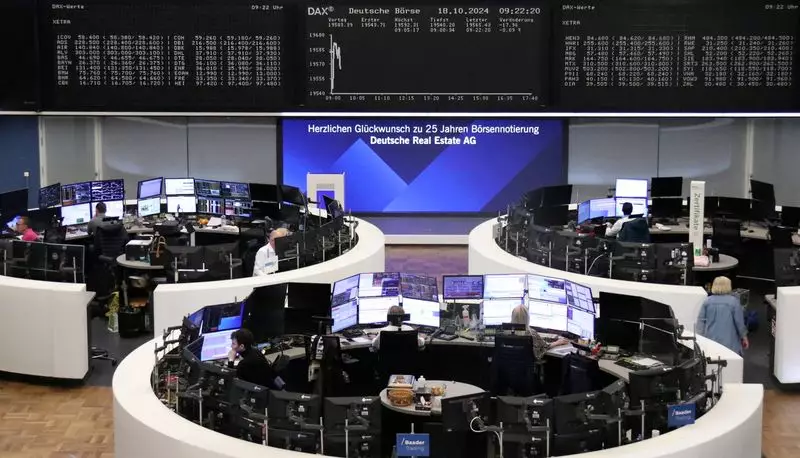The European stock market demonstrated a notable resurgence on Friday, highlighted by the performance of the STOXX 600 index. Climbing 0.2%, the index showcased the resilience of technology stocks, which bounced back impressively after a turbulent trading week. Specifically, the tech sector experienced a 2% upswing, a modest recovery considering the previous losses that saw it plummet by 6%. This rebound was crucial, given that tech has endured the toughest week among various sectors, primarily triggered by ASML’s dismal 2025 sales forecast, which rattled the global semiconductor industry.
Although ASML’s shares increased by 1% on that Friday, it was not enough to overshadow the overall concerns about the chip market. Other players in the semiconductor space, such as Soitec SA and BE Semiconductor Industries, found some solace with gains of 5.6% and 2.8%, respectively. This mixed bag of results illustrates the patchwork nature of recovery within the tech sector, emphasizing the fragility of market confidence amidst broader economic struggles.
Beyond technology, other sectors also exhibited positive momentum. The basic resources sector rose by 1.4%, propelling the index higher as robust copper prices provided a boost. Luxury goods also displayed strength, climbing 1.1% as brands like Kering and Hermes joined LVMH in recovering from earlier declines triggered by disappointing sales announcements. Notably, Brunello Cucinelli’s impressive nine-month revenue figures reinforced the notion that the luxury market retains its cachet even in challenging economic climates.
However, the backdrop of optimism was clouded by analysts downgrading growth prospects. Goldman Sachs made significant reductions to its earnings growth forecast for the STOXX 600, now projecting only 2% growth for 2024, down from 6%. This bleak outlook stems from concerns surrounding rising corporate taxes and the potential impact of trade tariffs, heightening uncertainty for European investors.
On the policy front, the European Central Bank’s decision to lower interest rates to 3.25% contributed to the mixed market reaction. With speculation indicating a further reduction in December, barring unexpected negative economic data, investors remain watchful. This monetary easing reflects a broader strategy to stimulate an economy grappling with slow growth and suppressed demand, particularly from China.
Analysts argue that Europe’s slower economic trend growth presents more significant vulnerabilities than the U.S. market. Daniel Murray, from EFGAM, highlighted that the risks associated with economic downturns are markedly higher within Europe, driven by sluggish growth and various potential shocks. This ongoing uncertainty acts as a dampening force on investor sentiment, with major events such as poor performance by companies like Elisa and Getinge exacerbating the challenges faced.
While the STOXX 600’s modest gains indicate a flicker of optimism amid challenging conditions, the overarching economic environment continues to pose significant risks. The interplay between sector performances, corporate earnings reports, and monetary policy by the European Central Bank will shape the trajectory of European markets in the near term. Investors must remain vigilant, ready to adapt to evolving conditions as they navigate the complex landscape ahead.

